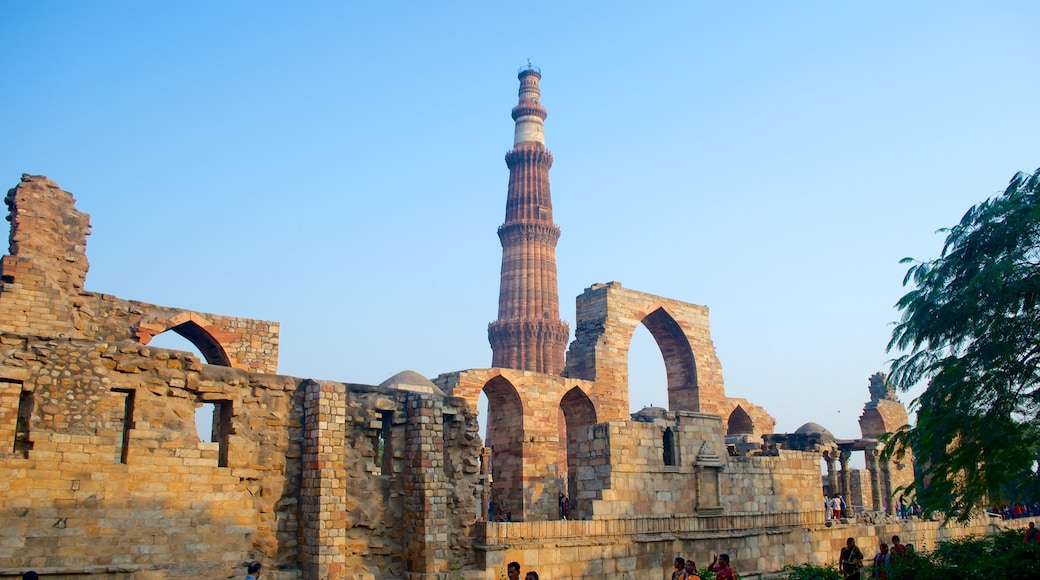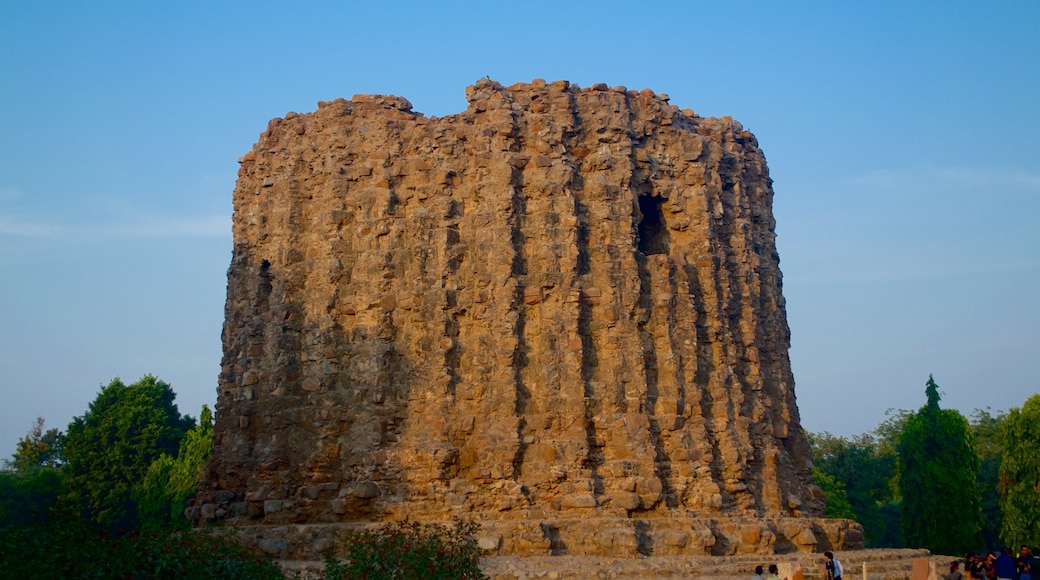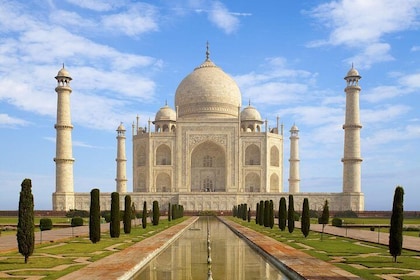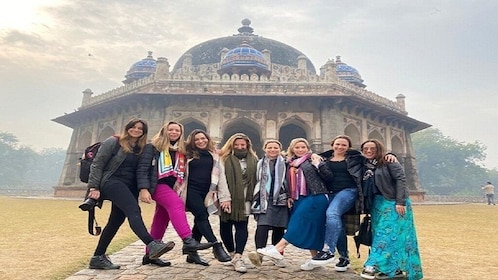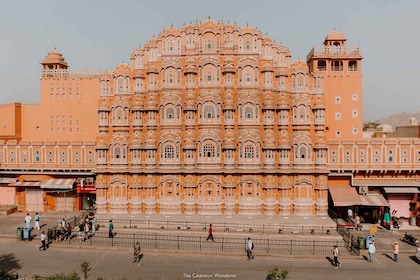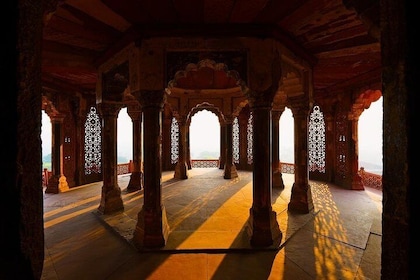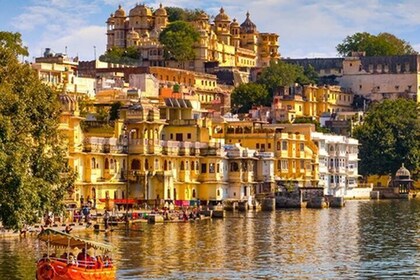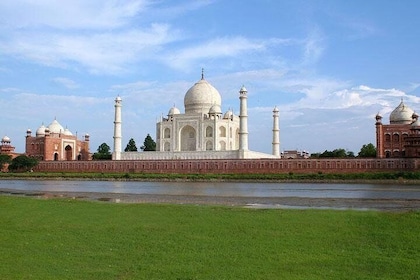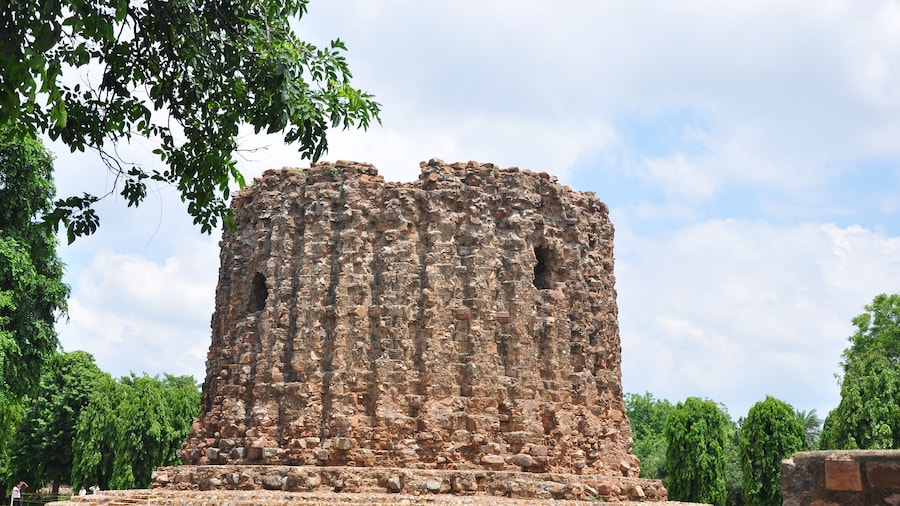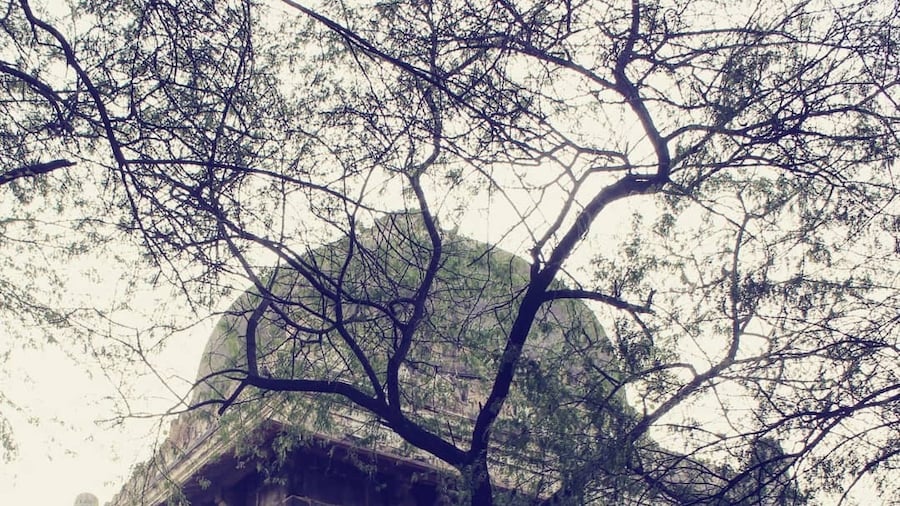The first Muslim kings built a towering minaret, here on the site of an ancient temple where Hindu and Islamic ruins are now irrevocably mixed and merged.
Sitting in the plains south-west of New Delhi is one of the wonders of the second ancient city of Delhi – a 73-metre high, 800-year old minaret. Qutub Minar, with its distinctive five fluted-stories – continuously rebuilt and reworked, as nature took its toll – looms over a temple complex even more ancient and history-tangled. A visit to Qutub Minar gives you a window onto the long and troubled tale of Delhi's religious conflicts.But most visitors come here first to stand and stare – Qutub Minar truly is an awe-inspiring sight. It was piled skywards, brick-by-brick, on the order of Qutub-ud-din Aibak in 1192, but was only completed during Iltutmish's reign. These were the first two Muslim rulers of Delhi, and the site chosen for their grand mosque and minaret was no accident – it was the location of 27 Hindu and Jain temples. By demolishing them, and using their materials to construct his minaret, Qutub was both celebrating his victory over the Hindu kings of Delhi, and sending a message to world – the future was Islam.The Qutub Minar, is in fact, the tallest brick-built minaret in the world, and long open to the public to ascend (until tragedy closed its 379-stepped stair-well). The bricks are carved with Koranic inscriptions which change as the tower ascends towards the heavens. First, the Kufic style of Islamic calligraphy is used then the more curvy Thuluth script. Towards the top, the red-sandstone is replaced by patterned white marble and sandstone, a sign of the repairs of earthquake damage, by Sikandar Lodi in 1505.While you can no longer climb to the top of Qutub Minar, you can admire its surroundings. There's the stark red-and-white geometry of Alai Darwaza, which once led into the Quwwat-ul-Islam Mosque. Only fragments of this 12th-century mosque's huge arched walls remain, though a wonderfully flagged courtyard is still here. There is also the giant stub of the minaret that was to dwarf Qutub Minar, now called the Alai Minar. It was started by Alauddin Khilji, just before his death in 1316.And you cannot miss the Iron Pillar of Delhi, in the mosque courtyard. It is said to grant your wish, if you can reach around it, back to the pillar. It might be in a mosque, but its Hindu inscriptions dedicate it to Vishnu – a sign that here at Qutub Minar, the two religions can sometimes sit together, without falling out.

